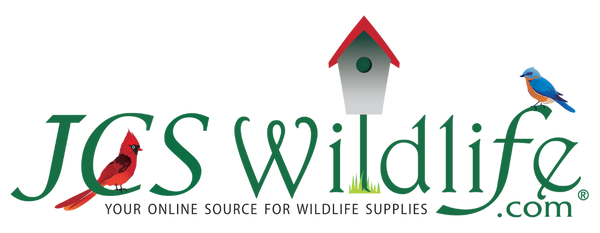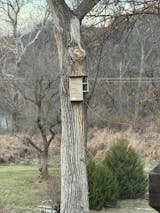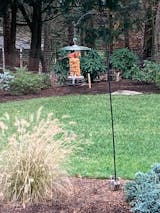American Goldfinches are some of the most recognizable, friendly birds in the avian world. With their bright color and bouncy behavior, it is no wonder why a group of Goldfinches is known as a charm. Check out these interesting facts and feeding tips to keep them coming back.
Finch Feeding Tips:
While American Goldfinches typically breed in late June and early July, they eat seed almost exclusively and, if left uninterrupted, will stay at a feeder for long periods of time. Consider keeping your feeders out year-round to enjoy their bright colors during warmer months.
The most popular seed for finches is thistle. Other seeds and blends that will work in most finch feeders are nyjer (also called niger), canary, and rape seed. The words nyjer/niger and thistle are often used interchangeably. These are different plants, but all finches are known to eat up either. You may attract Goldfinches by planting marigolds, zinnias, cosmos, coneflowers, and by allowing dandelions to grow in your yard.
Goldfinches are non-confrontational, and will avoid feeding from a spot where they have to compete for food. If you notice your birds jostling for space, consider adding additional feeders. Several thistle socks will work, too.

|
| Goldfinches at a filled thistle sock |
Caring For Your Feeder:
Some finch feeders will allow you to fill from both the top and the bottom. This is to keep the seed fresh. If your feeder does not have this option, consider emptying the feeder completely when it is time to top-off and replace the older seed near the top of the feeder. This should only be done if the older seed is still dry and not showing signs of mold or rancidity.
Check food for freshness a couple times a week. Empty feeder completely and discard any moist or spoiled seed, then clean, dry, and refill. This should be done more often during very warm weather. Feeders may be cleaned using mild soapy water. NEVER put any feeder parts in the dishwasher unless the manufacturer specifically suggests to do so on the packaging. Make sure your feeder is completely clean and dry before adding seed.
Are Goldfinches a common sight in your yard? Share your story in the comments below!
Sources: Songbird Essentials, Nunn-Better Milling






